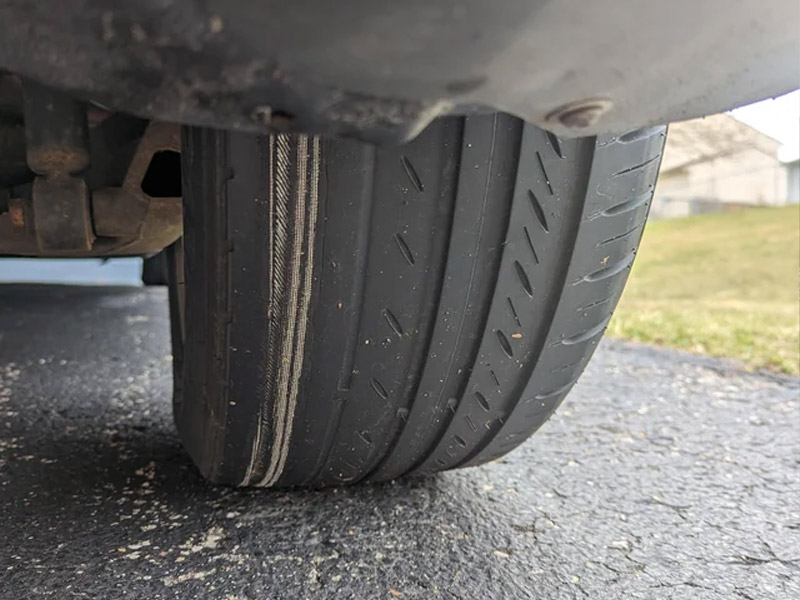Your tires are the only point of contact between your vehicle and the road, making them one of the most critical safety components of your car. Yet th
Your tires are the only point of contact between your vehicle and the road, making them one of the most critical safety components of your car. Yet they’re often overlooked until something goes wrong. Proper tire maintenance not only keeps you safer on the road but also saves you money by extending tire life and improving fuel efficiency. Here’s everything you need to know about keeping your tires in optimal condition.
Tire Pressure: The Foundation of Tire Health
Maintaining correct tire pressure is perhaps the simplest yet most important aspect of tire care. Both underinflated and overinflated tires create problems that affect your safety and wallet.
Why Pressure Matters
Underinflated tires increase rolling resistance, which means your engine works harder and burns more fuel. They also wear faster on the outer edges and generate excessive heat, which can lead to blowouts. Overinflated tires, on the other hand, provide a harsh ride, reduce traction, and wear more quickly in the center of the tread.
How to Check and Maintain Proper Pressure
Check your tire pressure at least once a month and before long trips. Always check when tires are cold, meaning the vehicle hasn’t been driven for at least three hours. You’ll need an accurate tire pressure gauge, which you can purchase at any auto parts store for under $20.
The correct pressure for your vehicle is listed on a sticker inside the driver’s door jamb, not on the tire sidewall. The number on the tire indicates the maximum pressure the tire can handle, not the recommended pressure for your vehicle. Most passenger cars require between 30 and 35 PSI, but always follow your manufacturer’s recommendation.
Don’t forget the spare tire. Many drivers discover their spare is flat only when they need it most. Check it with the same frequency as your other tires.
Tread Depth: Your Safety Net
Tire tread channels water away from the contact patch between your tire and the road. Worn tread dramatically increases your risk of hydroplaning in wet conditions and extends your stopping distance.
How to Measure Tread Depth
The penny test is a quick way to check tread depth. Insert a penny into the tread groove with Lincoln’s head upside down. If you can see the top of Lincoln’s head, your tread is at or below 2/32 of an inch and the tire should be replaced immediately.
For a more accurate measurement, use a tread depth gauge. New tires typically have 10/32 to 11/32 inch of tread. Most experts recommend replacing tires when they reach 4/32 inch, especially if you drive in wet conditions frequently. At this depth, your vehicle’s ability to grip wet roads diminishes significantly.
Recognizing Uneven Wear Patterns
Tires should wear evenly across the entire tread surface. Uneven wear indicates a problem that needs attention. Center wear suggests overinflation, while edge wear indicates underinflation. Wear on one side points to alignment issues, and cupping or scalloping indicates worn suspension components or improper balance.
Tire Rotation: Extending Tire Life
Your vehicle’s weight isn’t distributed evenly, and neither is the work your tires do. Front tires on front-wheel-drive vehicles wear faster because they handle steering, braking, and power delivery. Rotating your tires ensures more even wear across all four tires, extending their useful life.
Rotation Patterns
The proper rotation pattern depends on your vehicle and tire type. For front-wheel-drive vehicles with non-directional tires, the front tires move straight back and the rear tires move forward and cross to opposite sides. Rear-wheel-drive and all-wheel-drive vehicles use different patterns. Directional tires, which are designed to roll in only one direction, move front to back on the same side of the vehicle.
Rotation Schedule
Rotate your tires every 5,000 to 7,500 miles, or about every other oil change if you follow modern extended oil change intervals. Check your owner’s manual for the manufacturer’s specific recommendation. Many tire shops offer free rotation if you purchased your tires from them, making this an easy maintenance task to keep current.
Additional Tire Care Tips
Alignment and Balance
Have your alignment checked annually or if you notice your vehicle pulling to one side or uneven tire wear. Wheel balancing should be done whenever tires are mounted and if you notice vibration at highway speeds.
Visual Inspections
Regularly inspect your tires for cuts, punctures, bulges, or objects embedded in the tread. Any bulge in the sidewall indicates internal damage and the tire should be replaced immediately. Remove stones or debris from tread grooves before they cause damage.
Driving Habits
Aggressive driving accelerates tire wear. Rapid acceleration, hard braking, and high-speed cornering all stress tires unnecessarily. Smooth, steady driving extends tire life and improves fuel economy.
Storage Considerations
If you store seasonal tires, keep them in a cool, dry place away from direct sunlight and sources of ozone like electric motors. Store them vertically if unmounted, or stack them horizontally if mounted on wheels.
The Bottom Line
Tire maintenance requires minimal time and effort but delivers substantial returns in safety, performance, and cost savings. A few minutes each month checking pressure and inspecting tread can prevent roadside emergencies and help you get the full rated mileage from your tires. With tires typically costing $400 to $1,200 for a complete set, proper maintenance is one of the most cost-effective ways to care for your vehicle.
Make tire care part of your routine, and your tires will reward you with reliable, safe performance for years to come.


COMMENTS